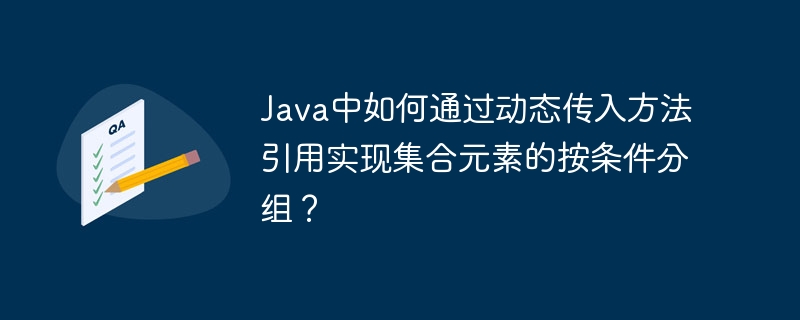
按条件动态传入方法引用进行分组
在 java 中,可以使用流(stream)操作对集合元素进行分组。默认情况下,可以通过调用 collectors.groupingby() 方法并提供一个方法引用来按特定属性对元素分组。但是,有时根据不同的条件动态传入方法引用可能会很方便。
要实现此功能,可以使用 function 接口,它是一个表示函数的泛型接口。我们可以将方法引用包装在 function 中,然后将其作为参数传递给 groupingby() 方法。
如下面的代码所示:
public static list<student> groupby(list<student> list, function<student, ?> dynamicreference) {
map<?, list<student>> groupedstudents = list.stream()
.collect(collectors.groupingby(dynamicreference));
return groupedstudents.values().stream()
.flatmap(collection::stream)
.collect(collectors.tolist());
}登录后复制
在 groupby() 方法中,我们使用 collectors.groupingby(dynamicreference) 将学生列表按 dynamicreference 指定的属性进行分组。然后,我们使用平坦化(flatmap)和收集(collect)操作将分组后的值转换为一个列表。
立即学习“Java免费学习笔记(深入)”;
例如,我们有一个 student 对象的列表,其中包含性别和年龄信息。我们可以使用以下代码动态传入方法引用来按性别和年龄分组:
list<student> students = ...; list<student> groupedbysex = groupby(students, student::getsex); list<student> groupedbyage = groupby(students, student::getage); system.out.println(arrays.tostring(groupedbysex.toarray())); system.out.println(arrays.tostring(groupedbyage.toarray()));
登录后复制
输出结果如下:
[Student [name=Alice, sex=female, age=20], Student [name=Alice, sex=female, age=21]] [Student [name=Alice, sex=female, age=20], Student [name=Bob, sex=male, age=22], Student [name=Bob, sex=male, age=22], Student [name=Charlie, sex=male, age=23]]
登录后复制
通过这种方法,我们可以根据所需的条件动态传入方法引用来对集合中的元素进行分组。
以上就是Java中如何通过动态传入方法引用实现集合元素的按条件分组?的详细内容,更多请关注其它相关文章!







